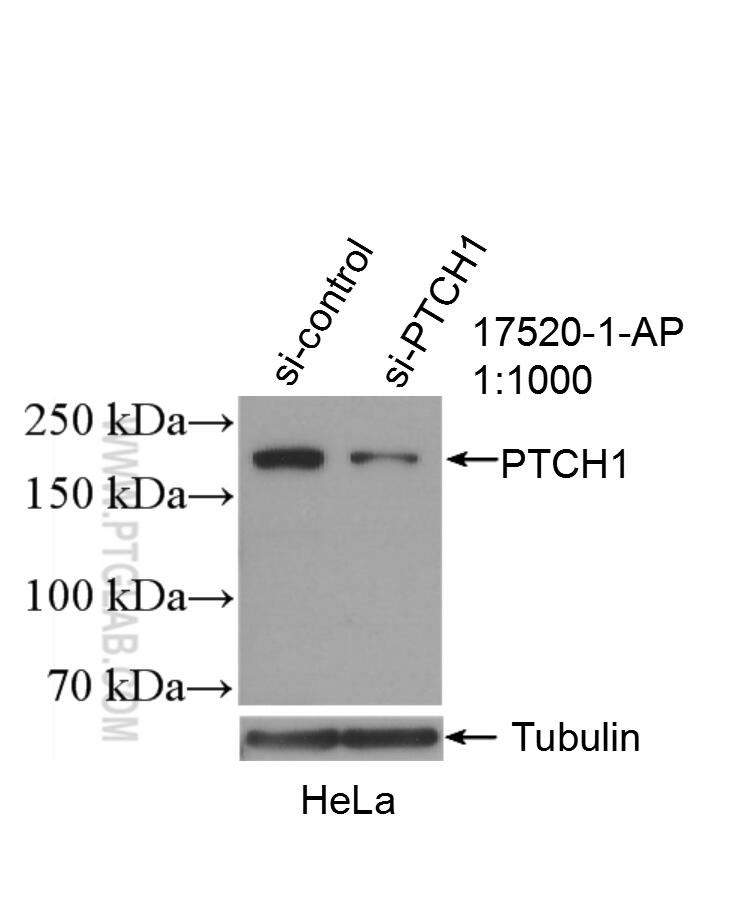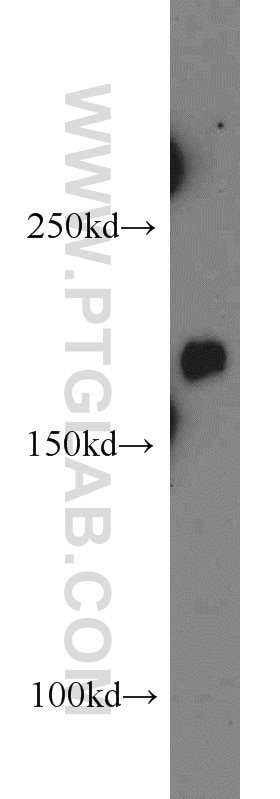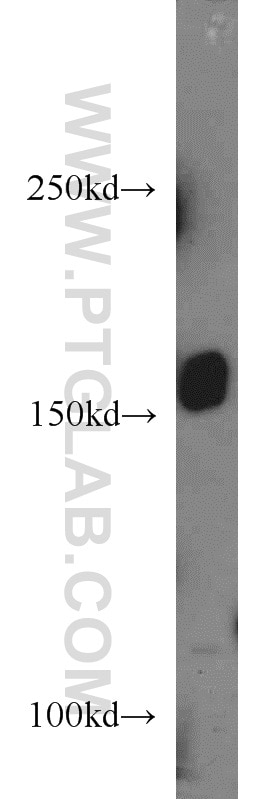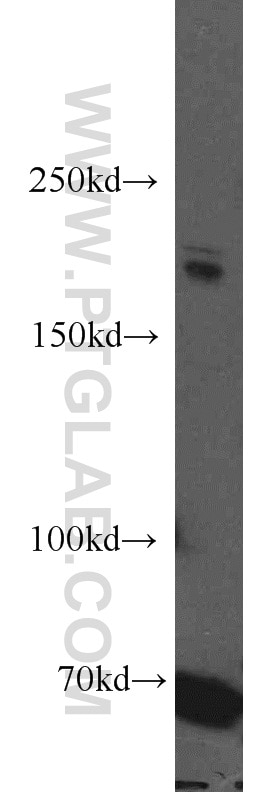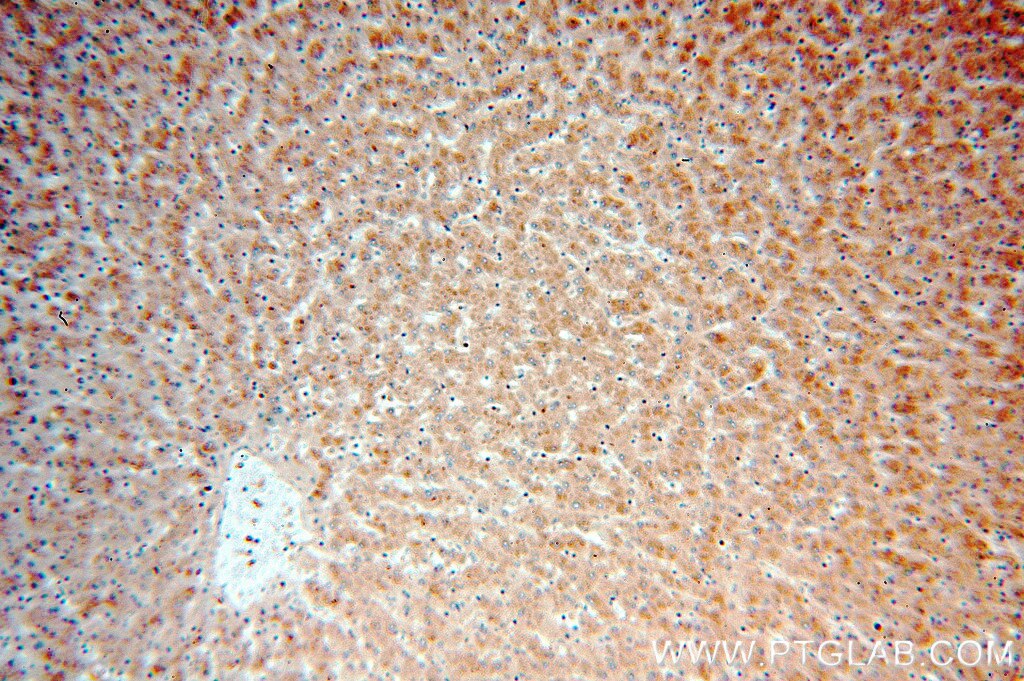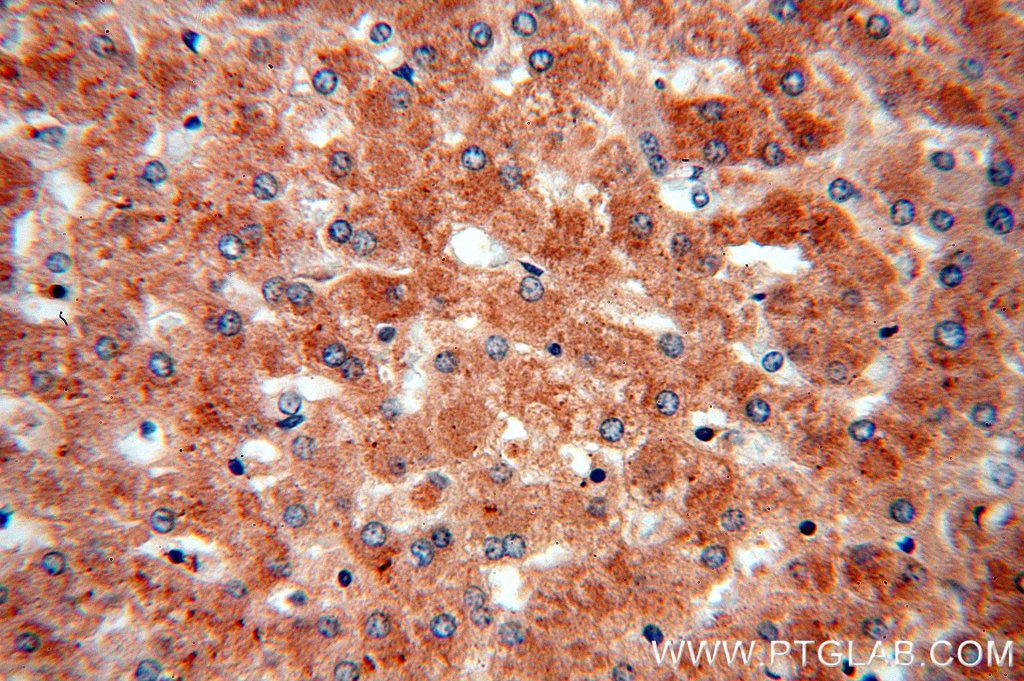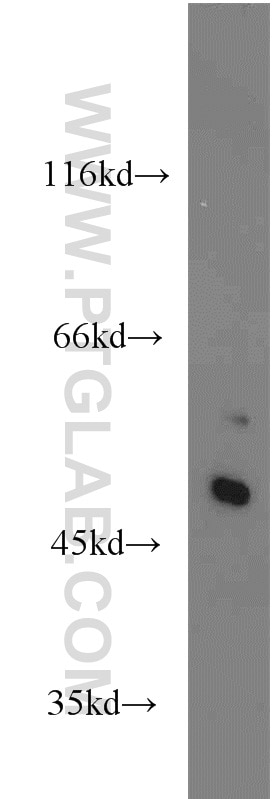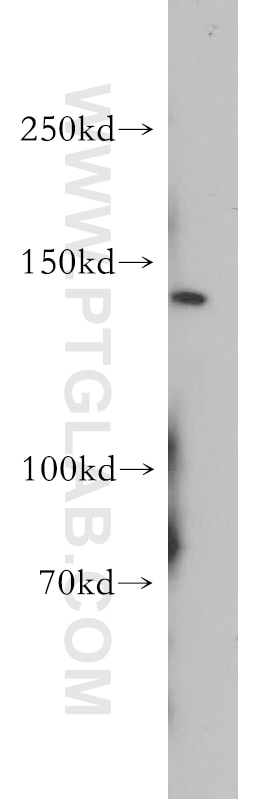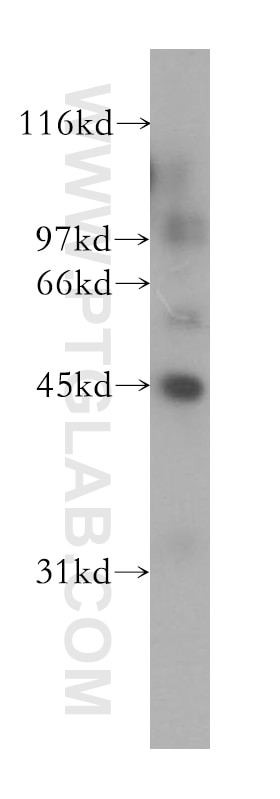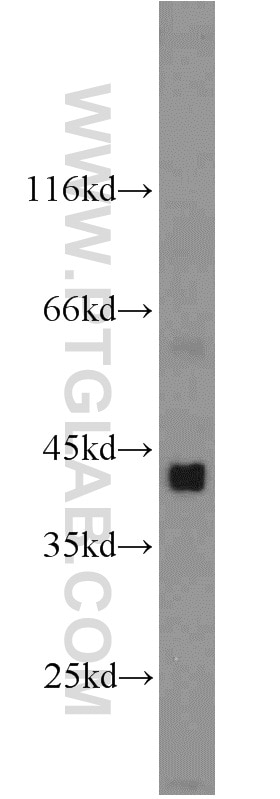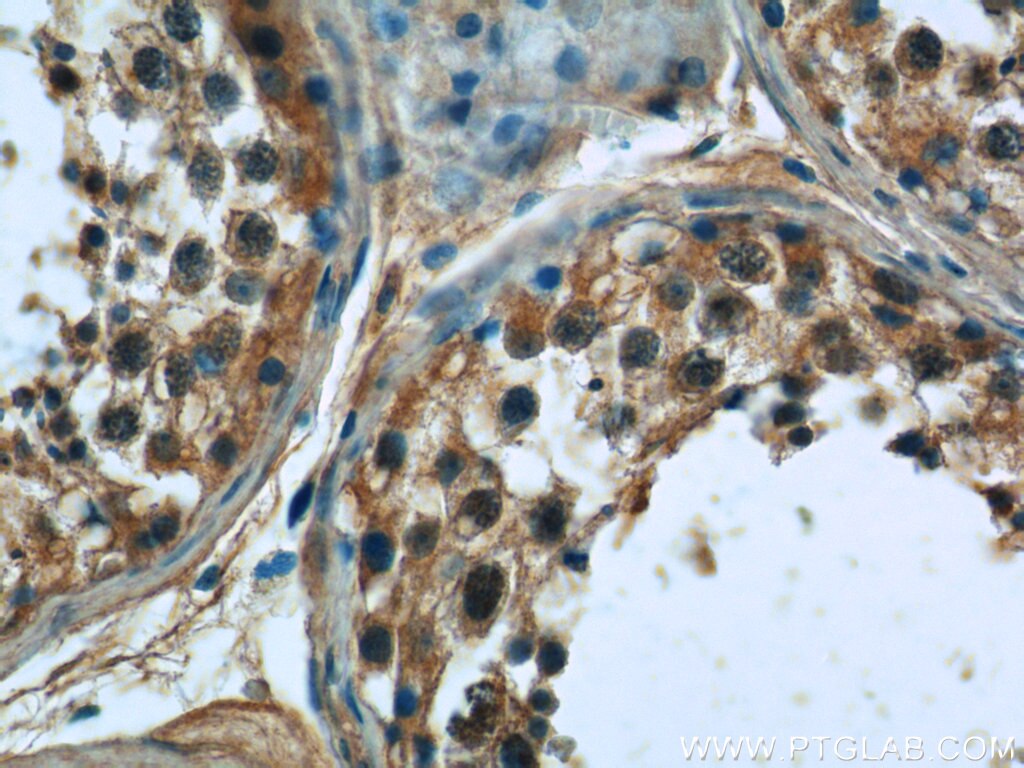- Phare
- Validé par KD/KO
Anticorps Polyclonal de lapin anti-PTCH1
PTCH1 Polyclonal Antibody for WB, IHC, ELISA
Hôte / Isotype
Lapin / IgG
Réactivité testée
Humain, souris et plus (1)
Applications
WB, IF, IHC, ELISA
Conjugaison
Non conjugué
N° de cat : 17520-1-AP
Synonymes
Galerie de données de validation
Applications testées
| Résultats positifs en WB | tissu cérébral de souris, cellules A431, cellules HeLa |
| Résultats positifs en IHC | tissu hépatique humain il est suggéré de démasquer l'antigène avec un tampon de TE buffer pH 9.0; (*) À défaut, 'le démasquage de l'antigène peut être 'effectué avec un tampon citrate pH 6,0. |
Dilution recommandée
| Application | Dilution |
|---|---|
| Western Blot (WB) | WB : 1:500-1:1000 |
| Immunohistochimie (IHC) | IHC : 1:50-1:200 |
| It is recommended that this reagent should be titrated in each testing system to obtain optimal results. | |
| Sample-dependent, check data in validation data gallery | |
Applications publiées
| WB | See 21 publications below |
| IHC | See 5 publications below |
| IF | See 1 publications below |
Informations sur le produit
17520-1-AP cible PTCH1 dans les applications de WB, IF, IHC, ELISA et montre une réactivité avec des échantillons Humain, souris
| Réactivité | Humain, souris |
| Réactivité citée | rat, Humain, souris |
| Hôte / Isotype | Lapin / IgG |
| Clonalité | Polyclonal |
| Type | Anticorps |
| Immunogène | Peptide |
| Nom complet | patched homolog 1 (Drosophila) |
| Masse moléculaire calculée | 161 kDa |
| Poids moléculaire observé | 161 kDa |
| Numéro d’acquisition GenBank | NM_000264 |
| Symbole du gène | PTCH1 |
| Identification du gène (NCBI) | 5727 |
| Conjugaison | Non conjugué |
| Forme | Liquide |
| Méthode de purification | Purification par affinité contre l'antigène |
| Tampon de stockage | PBS avec azoture de sodium à 0,02 % et glycérol à 50 % pH 7,3 |
| Conditions de stockage | Stocker à -20°C. Stable pendant un an après l'expédition. L'aliquotage n'est pas nécessaire pour le stockage à -20oC Les 20ul contiennent 0,1% de BSA. |
Informations générales
PTCH1 (patched homolog 1) is a twelve-pass transmembrane protein that acts as a receptor of Hedgehog signaling pathway (PMID: 8906794). Hedgehog pathway plays a critical role in embryonic development and tissue homeostasis, and its dysregulation has been implicated in many human diseases including congenital disorder and cancer (PMID: 23719536; 23532857). In the absence of Hedgehog proteins (SHH, IHH and DHH in humans), PTCH1 represses the activity of Smoothened (SMO). Binding of Hedgehog proteins to PTCH1 inhibits the repression of SMO, resulting in the activation of downstream targets through the Gli transcriptional effectors (PMID: 23719536; 17139287). The gene of PTCH1 is considered to be a tumor suppressor gene. Mutations of this gene have been associated with basal cell nevus syndrome, esophageal squamous cell carcinoma, trichoepitheliomas, transitional cell carcinomas of the bladder, as well as holoprosencephaly.
Protocole
| Product Specific Protocols | |
|---|---|
| WB protocol for PTCH1 antibody 17520-1-AP | Download protocol |
| IHC protocol for PTCH1 antibody 17520-1-AP | Download protocol |
| Standard Protocols | |
|---|---|
| Click here to view our Standard Protocols |
Publications
| Species | Application | Title |
|---|---|---|
Nat Commun TSPAN8 promotes cancer cell stemness via activation of sonic Hedgehog signaling. | ||
Nat Commun mTORC1 regulates PTHrP to coordinate chondrocyte growth, proliferation and differentiation. | ||
Am J Hum Genet Genomic analyses reveal mutational signatures and frequently altered genes in esophageal squamous cell carcinoma. | ||
Elife Activation of Hedgehog signaling in mesenchymal stem cells induces cartilage and bone tumor formation via Wnt/β-Catenin. | ||
J Mol Cell Biol Sequential stabilization of RNF220 by RLIM and ZC4H2 during cerebellum development and Shh-group medulloblastoma progression. | ||
Cancers (Basel) RNA-seq and ChIP-seq Identification of Unique and Overlapping Targets of GLI Transcription Factors in Melanoma Cell Lines |
Avis
The reviews below have been submitted by verified Proteintech customers who received an incentive forproviding their feedback.
FH Charlotte (Verified Customer) (07-27-2022) | 1/2 : WT starved and then ShhN stimulated. 3/4 : Ptch1 KO cells starved and then ShhN stimulated. It should be between the uppermost band and the following one from the ladder but we can conclude that there is nothing and the antibody is really dirty
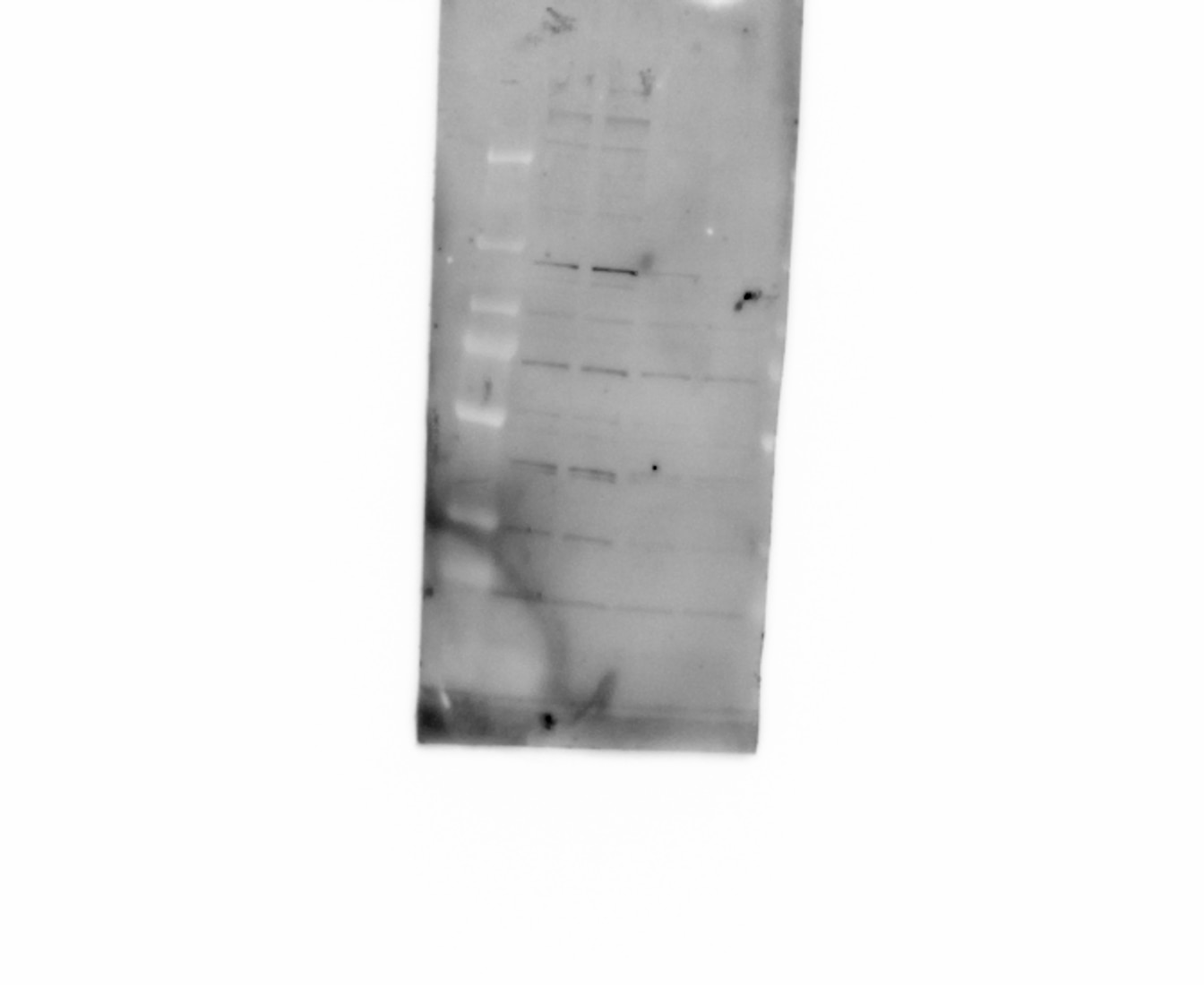 |
FH Boyan (Verified Customer) (04-04-2019) | The band at around 200 KD is not the true band of Ptc1, because this band cannot be increased by treating the cells with Shh ligand, and did not disappear in Ptc1 KO cells. As positive controls, Gli1 was induced by treating the cells with the Shh ligand.
|
FH Juan Pablo (Verified Customer) (11-29-2018) | I see a band around 200kDa kind of clean. Never detected the 149kDa shown in proteintech website.
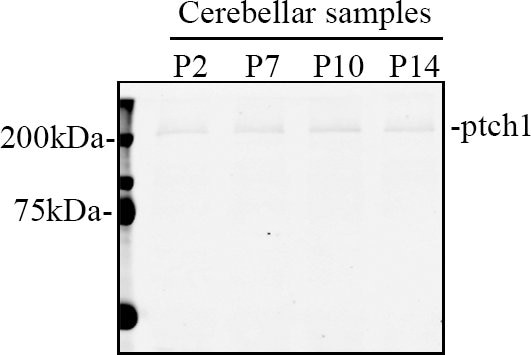 |
